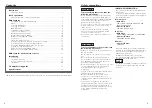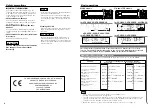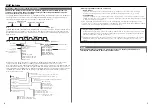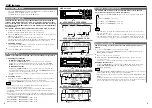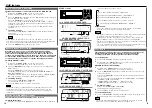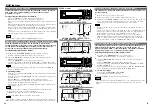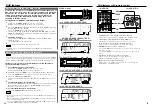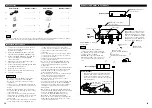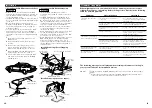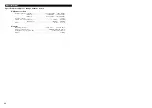
7
DAB features
6
About DAB (Digital Audio Broadcasting)
Thanks to the transmission of broadcast signals in digital format, the DAB system can
reproduce clearer audio than conventional analog broadcasting and stabilise reception
even in a mobile object such as a vehicle.
In existing analogue broadcasting (e.g., FM, MW and LW), for a broadcast station to broadcast
one programme the frequency must be changed and transmitted for each region and when
travelling over long distances it is necessary to change the frequency.
In DAB (Digital Audio Broadcasting), broadcasting to the area in a Single Frequency Network* is
permitted using one channel. In this system, a number of Services (Service components) are
broadcast as an Ensemble (one channel). Service components contain audio programmes and
data services.
Within a Service the main service component is broadcast as Primary and the other service
components are broadcast as Secondary, thereby providing diversity in one Service.
Also note that a Service transmits a wide variety of information such as Service Labels (names)
and network information. For example, transmitted information may include the same Service
that is broadcast by an RDS station. Based on this data, when it is no longer possible to receive
the DAB, there will be automatic switching to the RDS station which will allow continued
monitoring of the Service.
87.5
108.0
[MHz]
FMstation-A
FMstation-C
FMstation-D
RDSstation-B
Jazz music
175.04
249.984
[MHz] (Band III)
(225.648MHz)
channel
channel
BBC National
BBC R1 Digital
BBC R2 Digital
BBC R3 Digital
BBC R4 Digital
BBC R5L Dightal
BBCWorld Service
(---.---MHz)
DAB
Pops music
Jazz music
News
Sports
Drama
Parliament relay
Traffic announcement
Alarm announcement
Data Service
Service
components
[Audio programme]
[Data Service]
Frequency
Ensemble
Ensemble Label
Service Label
12B
Main channel: Regular audio
Sub channel: With commentary
Primary: English
Secondary: French
Secondary: German
Secondary: Dutch
Secondary: Italian
Primary: Regular audio
Secondary: A team fans
Secondary: B team fans
DataService: Team results, player
introductions, etc.
(---.---MHz)
DAB
Pops music
Jazz music
News
Sports
Drama
(Stereo)
(Stereo)
(Monaural)
(Joint Stereo)
(Dual channel)
Dynamic Label:
Song name, singer, song introduction, and other
textual information related to the programme.
Link Function:
Where is the same programme being broadcast?
For example, RDS station-B .
Alarm
When an emergency programme is broadcast in case of a disaster, all functions are
interrupted and switched to the alarm announcement.
• Audio programme services consist of;
• Audio Modes
There are four modes: stereo, dual channel (e.g., bilingual), joint stereo (in which high
frequency audio regions are converted to monaural), and single channel (e.g., mono).
• Sound Quality
There are a variety of levels which range from sound quality on par with a telephone to high
quality sound at the level of CD. There is also a mode that cuts the sampling frequency in half
to raise the transfer efficiency.
Audio mode and sound quality are each used to advantage in broadcasts depending on the
contents of the Service (Audio programme). In addition, the textual information (Dynamic Label)
related to the service (Audio programme) can be transmitted.
❈
Single Frequency Network* :
A transmission network in which the signal is transmitted on the same frequency from each
transmitter throughout the coverage area. Because signals from neighbouring transmitters
combine, rather than causing interference.
❈
Programme organization has been created for descriptive purposes and differs from actual
broadcasts. Also note that depending on time, the number of programmes is subject to
change.


